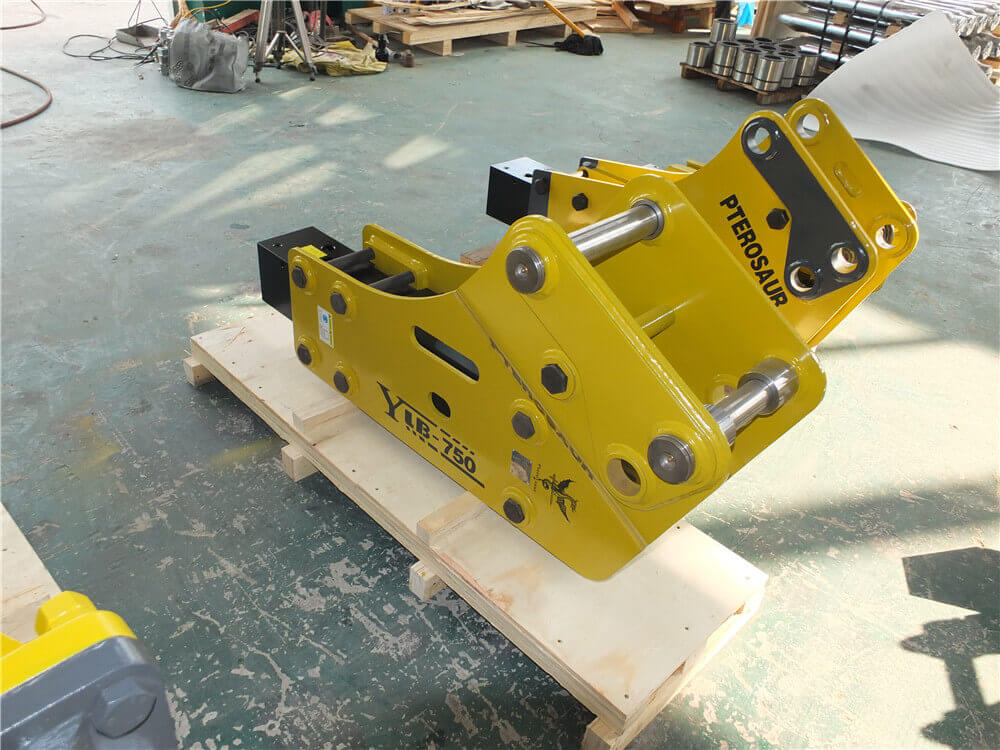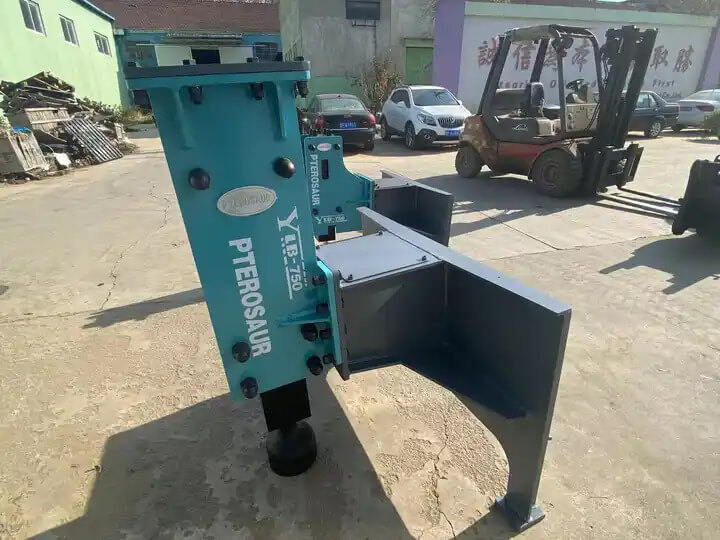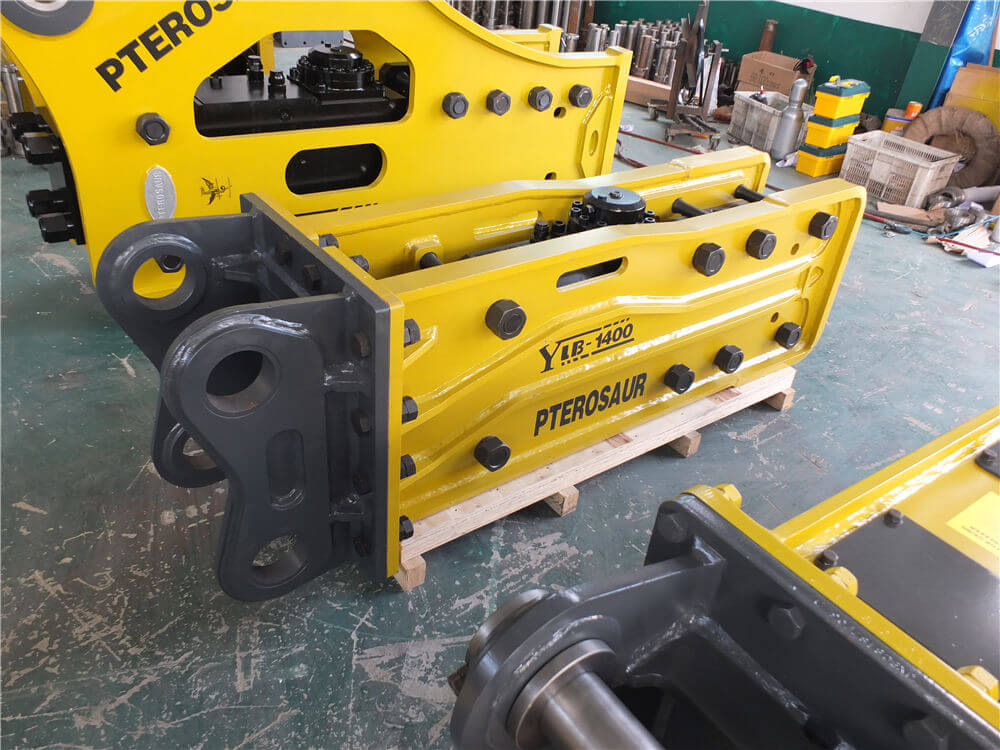
Proper use of the hydraulic breaker is essential to ensure its longevity and effectiveness. Here are key precautions to follow:
- Stop Operation if Hoses Vibrate Violently
If the high-pressure and low-pressure hoses vibrate excessively, stop operation immediately. This may indicate a fault, and you should contact an authorized service center for repairs. Check for oil leakage at hose connections and retighten if necessary. During operation, visually inspect the steel drill rod for wear; if it’s stuck in the lower body, remove it to assess if repairs or replacements are needed. - Avoid Excessive Air Strike
Once a stone is broken, stop hammering immediately. Continuing air strikes can loosen or break bolts and adversely affect excavators and loaders. Air strike occurs if the breaker is improperly used or if the chisel is employed as a lever. - Do Not Use the Breaker to Move Stones
Avoid rolling or pushing stones with the steel chisel or bracket. This can cause damage to the excavator’s arms and may break bolts or scratch the steel drill. Specifically, do not attempt to move stones while the chisel is inserted. - Do Not Use the Steel Drill as a Lever
Using the drill rod as a pry tool can lead to breaking the rod and bolts. - Limit Striking Duration
Strike hard rock in one location for no more than one minute, then change the position. Prolonged striking can cause excessive oil temperature, damaging the drill bushing and increasing wear. - Begin Breaking Large Stones at Cracks
For long and hard stones, start breaking at cracks or tail ends, which are generally easier to fracture. - Operate at Recommended Engine Speed
Ensure the engine speed meets specified values during operation. Exceeding recommended speeds does not increase striking force and can raise oil temperature, leading to equipment damage. - Avoid Operating in Water or Mud
Do not use the breaker in water or mud, as this may cause rust and damage to internal parts. For underwater work, special underwater breakers should be used. - Do Not Drop the Breaker onto Rubble
Dropping the breaker directly onto rubble can impose excessive force on the hydraulic hammer or excavator, risking damage. - Avoid Operation with Fully Extended Cylinder Rods
If the cylinder rod on the excavator is fully extended or retracted, avoid striking, as this can damage the hydraulic cylinder and other parts. - Do Not Suspend Objects with the Breaker
Never hang objects from the breaker, frame, or chisel. This can cause damage to the hydraulic breaker and is very dangerous. - Preheat Engine in Winter
In cold weather, start the engine and let it warm up for 5 to 20 minutes before operating the hydraulic breaker to prevent damage to pistons and seals.




